Panic bolting technology ensures that people can get out of a danger zone at any time, even in a panic situation. One push on the horizontal activation element is all it takes and the door springs open - irrespective of whether it was locked or not.
Teckentrup unlocking solutions also open up the escape route when a crowd of people press against the door. And even the strength of a child is sufficient to open the door to escape from a fire or toxic smoke.
Teckentrup panic bolting technology satisfies European standards BS EN 1125 (panic locks with horizontal activation bars) and BS EN 179 (Emergency exit locks with handles or impact plates) - and demonstrates the company's expertise. The lock and release element are developed and manufactured in coordination with one another.
With panic systems in particular, it is important to perceive the door as a system, because it's not only the panic lock, door lock and fitting that have to interact perfectly so that the door can help in a life-threatening situation. The door closer and hinges have a decisive influence on the ability to satisfy the high demands set by the standard.
European standards BS EN 1125 and BS EN 179 define the fittings of panic doors and emergency exits. Emergency exit locks in compliance with BS EN 179 are not normally subjected to use by the general public. It is assumed here that the users of the building are acquainted with the escape routes, so conventional panic lock technology with a handle or impact plate are sufficient. Panic locks with a horizontal activation bar in accordance with BS EN 1125, on the other hand, are intended for use in buildings frequented by the general public. Our panic systems in conformance with BS EN 1125 ensure that persons who have panicked and are not acquainted with the functions of the door can always get out of the building safely.
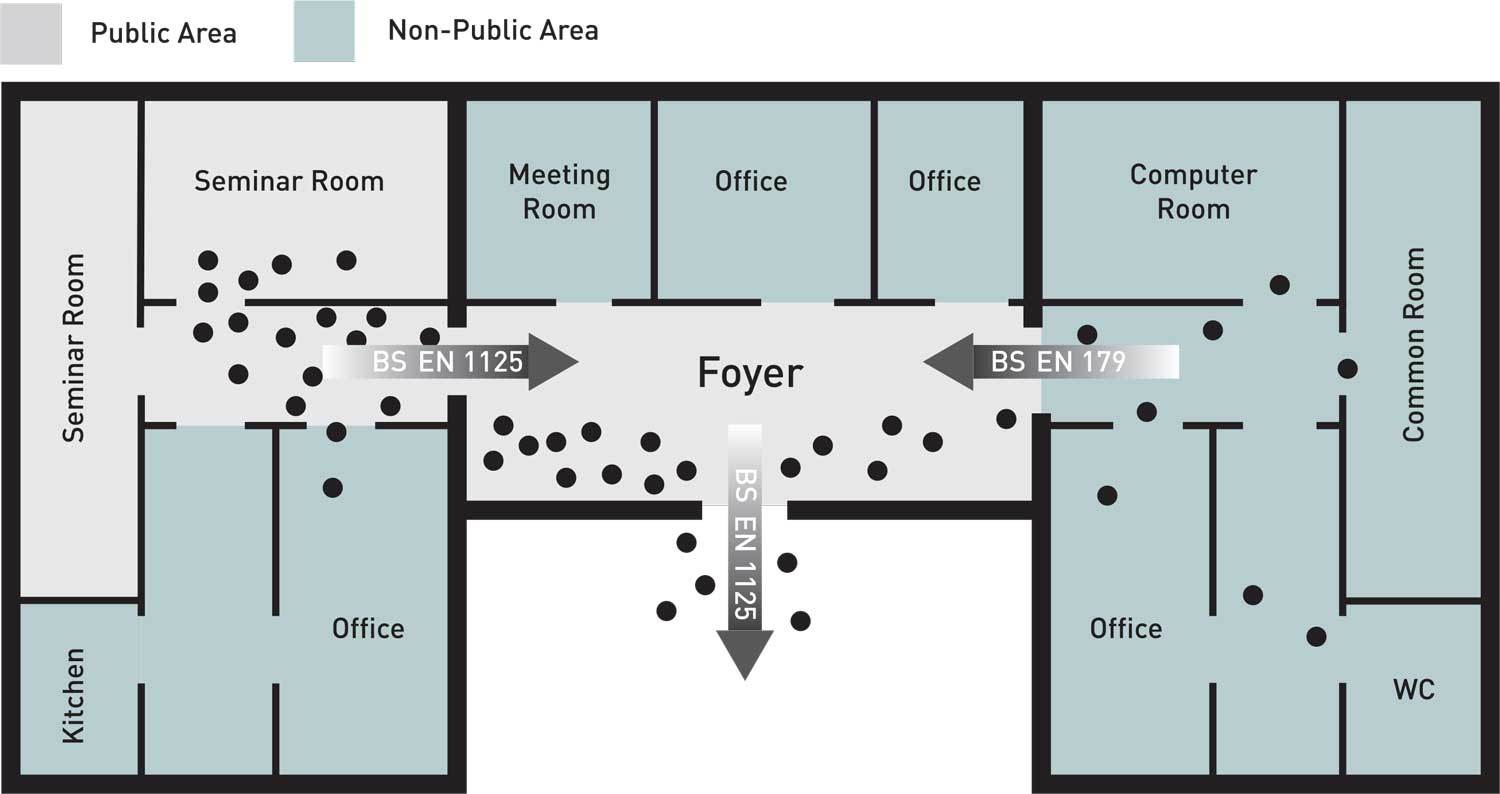

Panic locks in accordance with BS EN 1125 are used in public buildings in which the users are not acquainted with the functioning of the escape door but must nevertheless be able to operate them without instruction.
Panic locks activated mechanically by means of a horizontal handle or push-bar.
Areas of application:
Users have no advance knowledge of how to open the escape door.

Emergency exit locks in accordance with BS EN 179 for buildings or building sections not open to the general public and all areas where access by the general public can be excluded. Side entrances or doors in these buildings or building sections are only used by authorised persons.
Emergency exit locks operated mechanically by means of a handle or impact plate.
Areas of application:
Users have advance knowledge of how to open the escape door.
A panic lock functions in line with a defined principle: when the handle or panic bar is activated from the inside, the lock must spring open abruptly with a defined amount of force. Not only the latch but, if needed, the entire bolt is pulled back here. This basic function can be refined and varied using Teckentrup technology.
Panic Function E is intended for buildings with access for a defined group of people. A blind plate or knob is mounted on the outside of the door can only be opened with a key. Conventional panic function per handle from the inside.
Area of application:
Heating room access doors, elevator systems, underground/multi-storey carparks, storage and commercial buildings, entrance doors in rented apartment complexes and blocks of flats.

Panic Function D is intended for doors with a pure escape function which are not used otherwise. When the conventional panic function is activated from the inside, the door is opened and the outer handle is engaged as well. In this setting, the door does not constitute an obstacle when entering the building or escaping from it. The original function can be reset with a key. The coupling is mechanical via a two-part hub.
Area of application:
Escape doors in administration/office buildings, retirement homes, side entrance doors (e.g. schools and hotels).
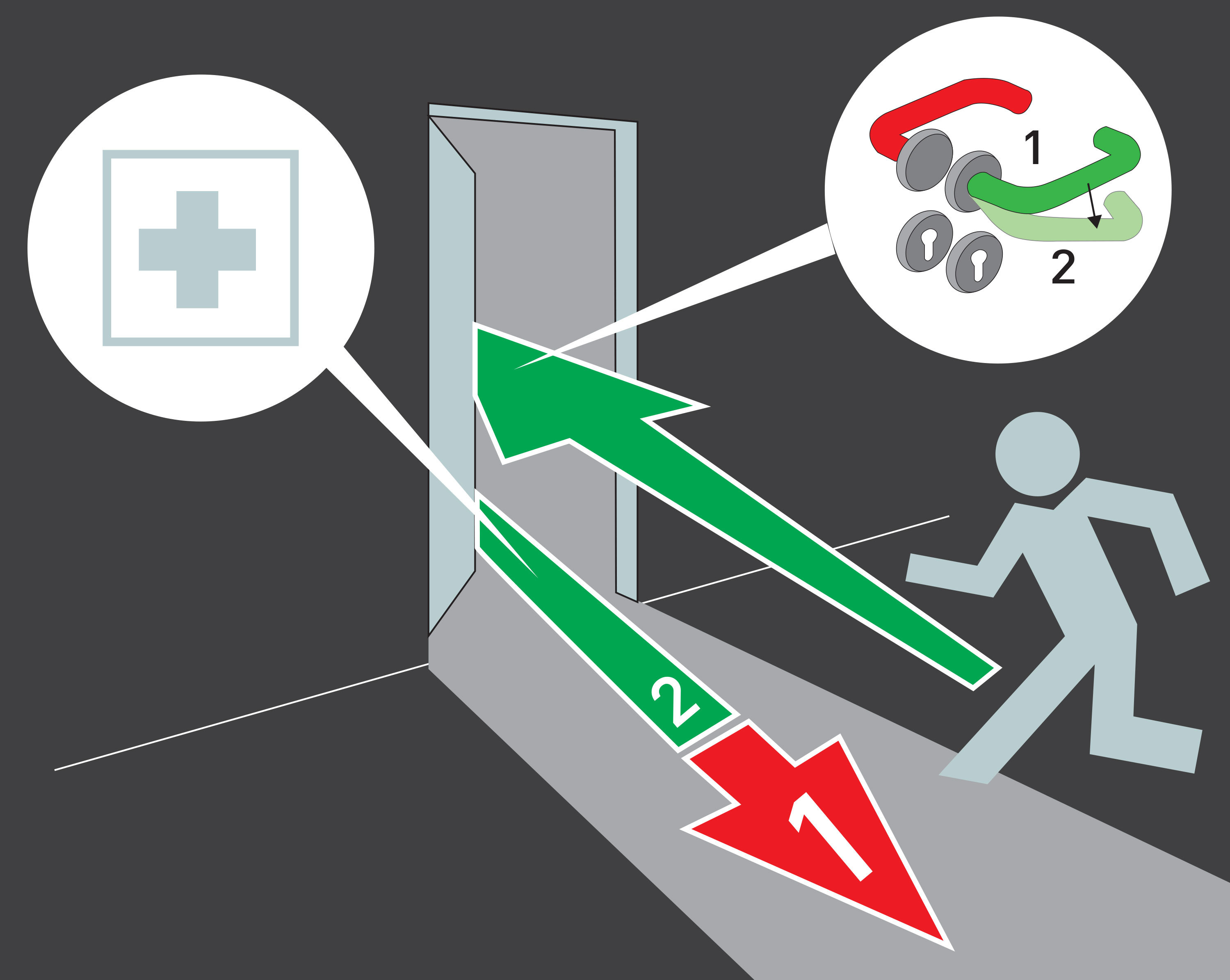
Panic Function B with a handle on both sides is designed for buildings open to the general public. While the handle on the inside has a conventional panic function, the outside handle can be engaged or disengaged mechanically as required. The two handles are coupled via a two-part hub.
Area of application:
Escape doors in administration buildings, retirement homes, side entrance doors (e.g. schools and hotels).
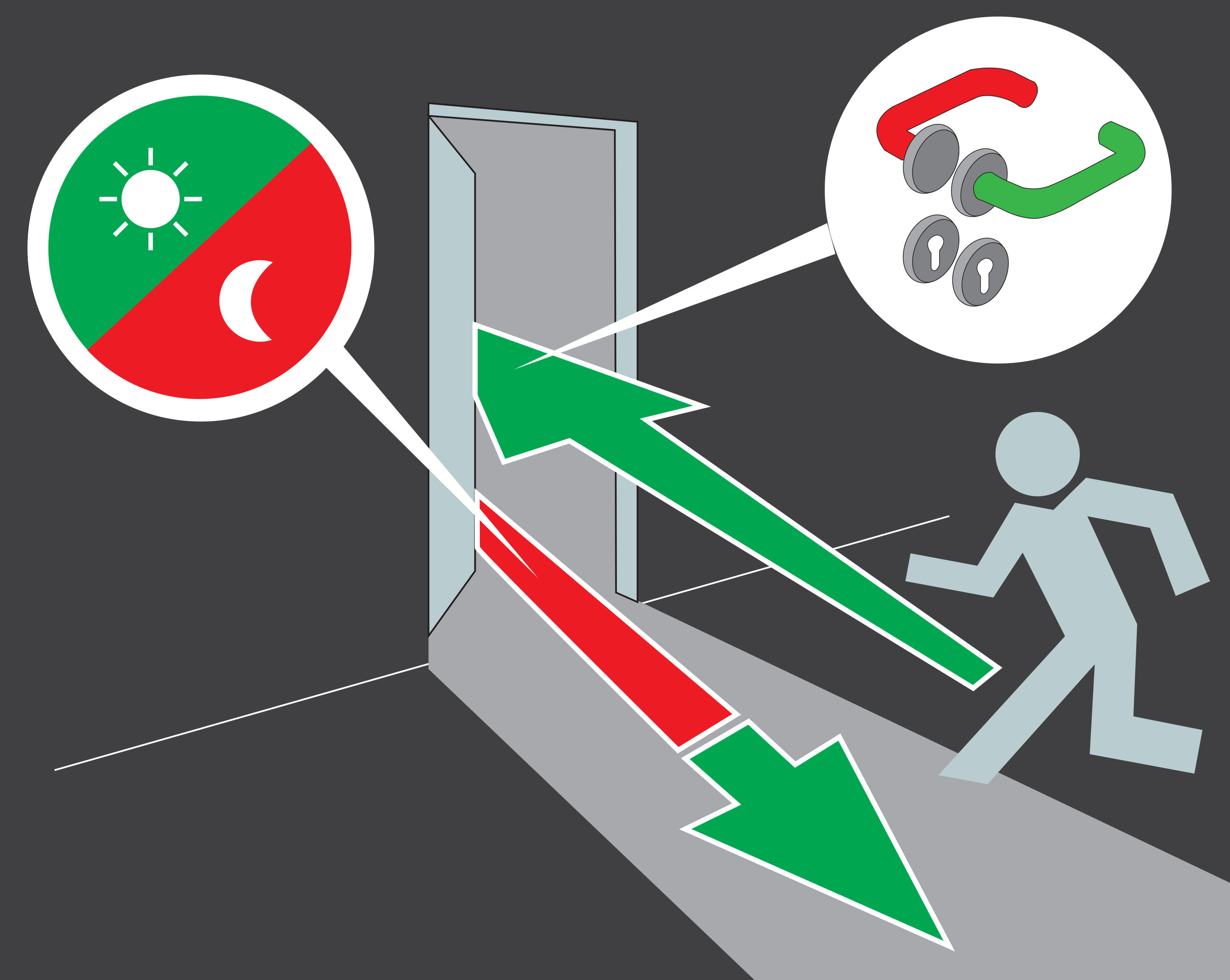
Panic Function C with a handle on both sides is designed for buildings open to the general public. While the handle on the inside has a conventional panic function, the handle on the outside is disengaged as standard (idle function) and a key position (open position) must be used to engage or disengage it (forced closure). However, the key can only be removed after the idle function has been set again.
Fields of application:
Doors in administration or office buildings, retirement homes, side entrance doors (schools or hotels).
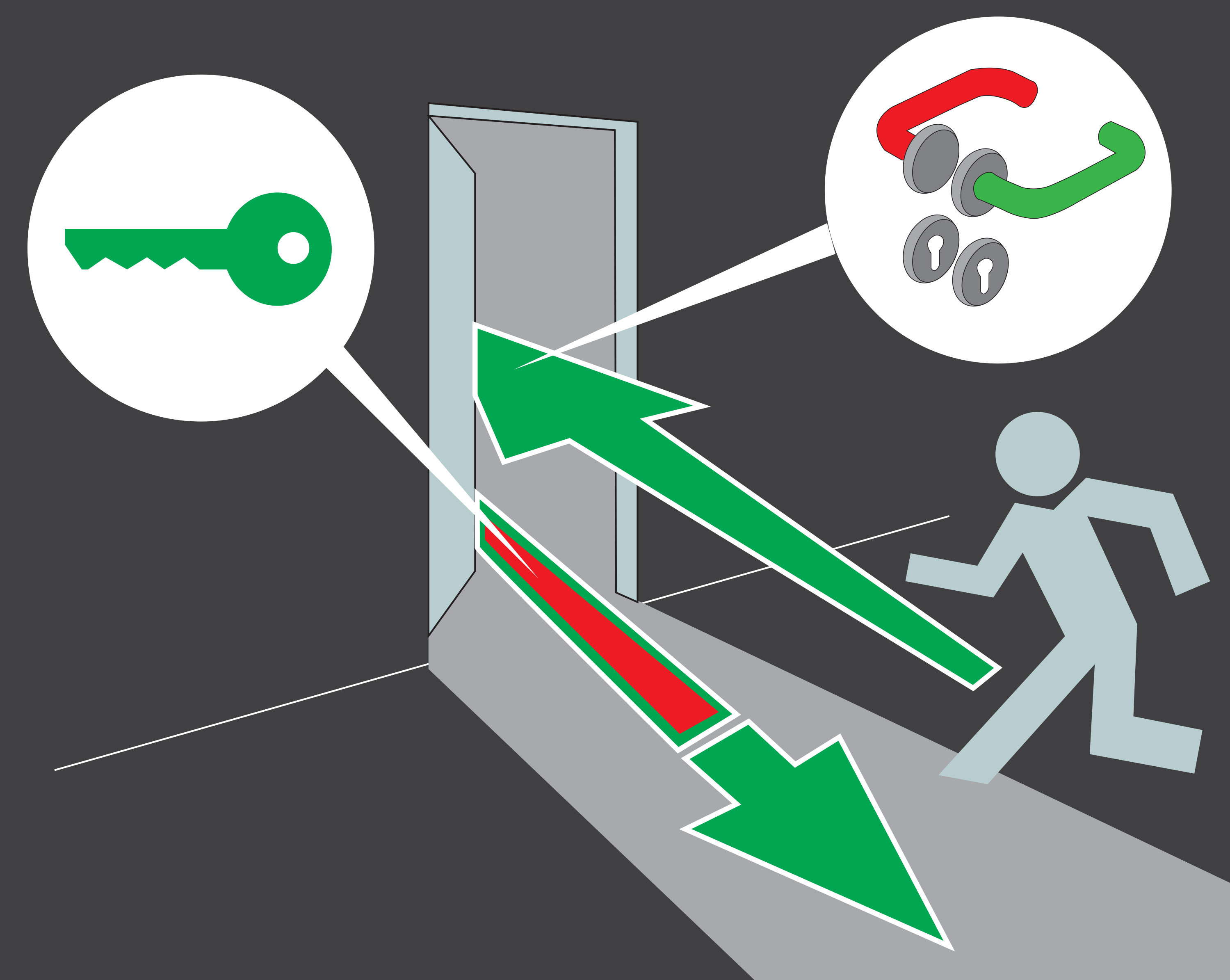
Teckentrup offers two horizontal panic door locking systems which differ in their aesthetics and function. They are suitable for buildings in which the outbreak of panic is at least likely in the event of danger. The objective is to provide a safe escape opportunity with minimum effort and without any advance knowledge of the functioning of the escape door.
The Teckentrup Pushbar is a Type A mechanical panic door lock in compliance with Euro standard BS EN 1125. This panic door lock unlocks reliably, even when force is already acting on the door. Movement of the horizontally attached tube in the direction of escape in a downward arch releases the locking mechanism abruptly via a steel gear system. This function can be activated from every point along the bar. The Teckentrup Pushbar can be bolted on or through the door and is protected against vandalism, depending on the construction and design. Available in standard or special lengths with a galvanised steel core with aluminium F1 or nylon coating or in high-grade stainless steel.
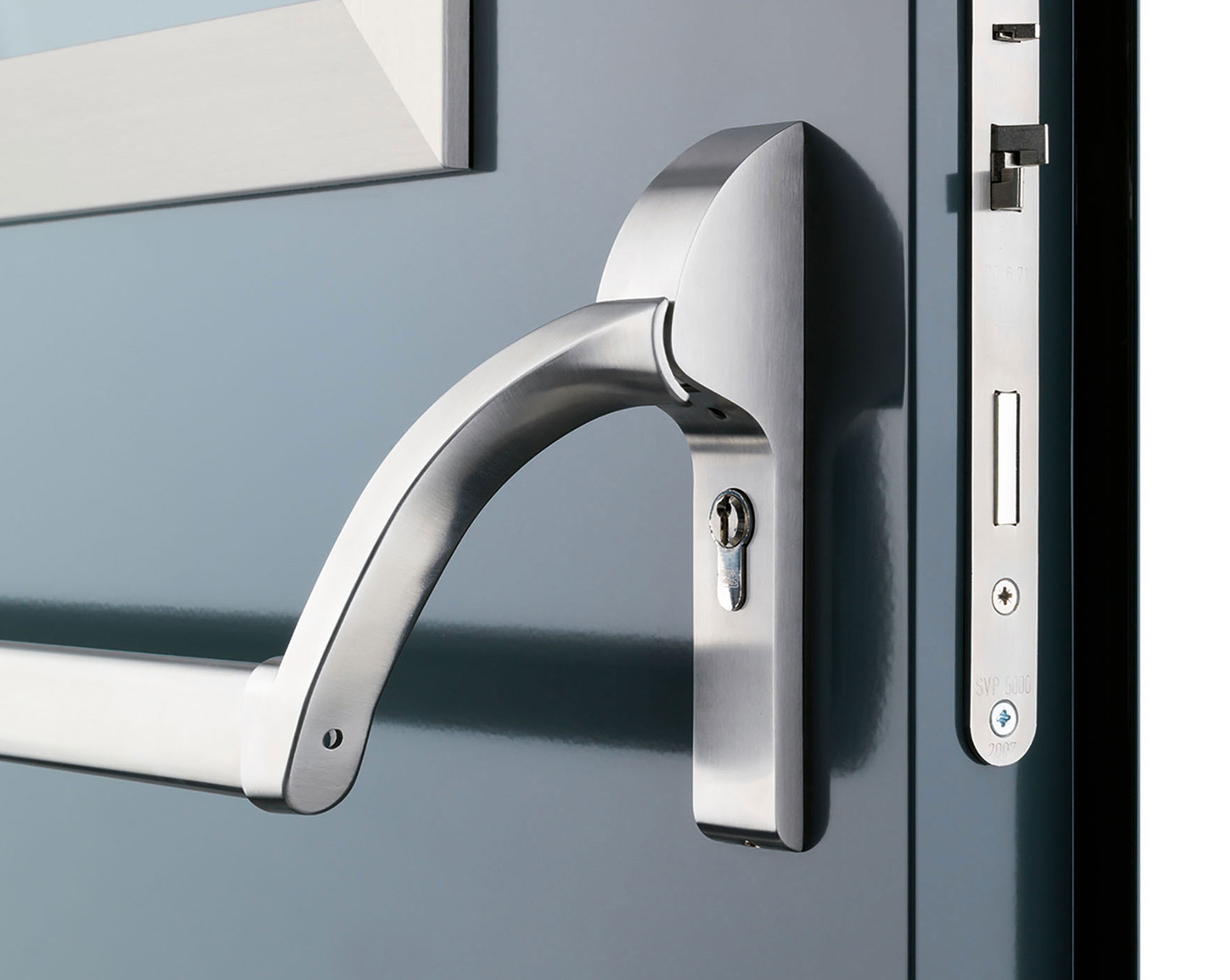
The Teckentrup Touchbar is a type B mechanical panic door lock in compliance with Euro standard BS EN 1125. This panic door lock unlock reliably, even when a force is already acting on the door. Movement of the horizontally attached touch bar in the direction of escape releases the locking mechanism and lock abruptly. The release function can be activated from every point along the effective length of the touch profile. The Teckentrup Touchbar can be bolted on or through the door and is protected against vandalism, depending on the construction and design. Available in standard or special lengths with a galvanised steel core with aluminium F1 or nylon coating or in high-grade stainless steel.
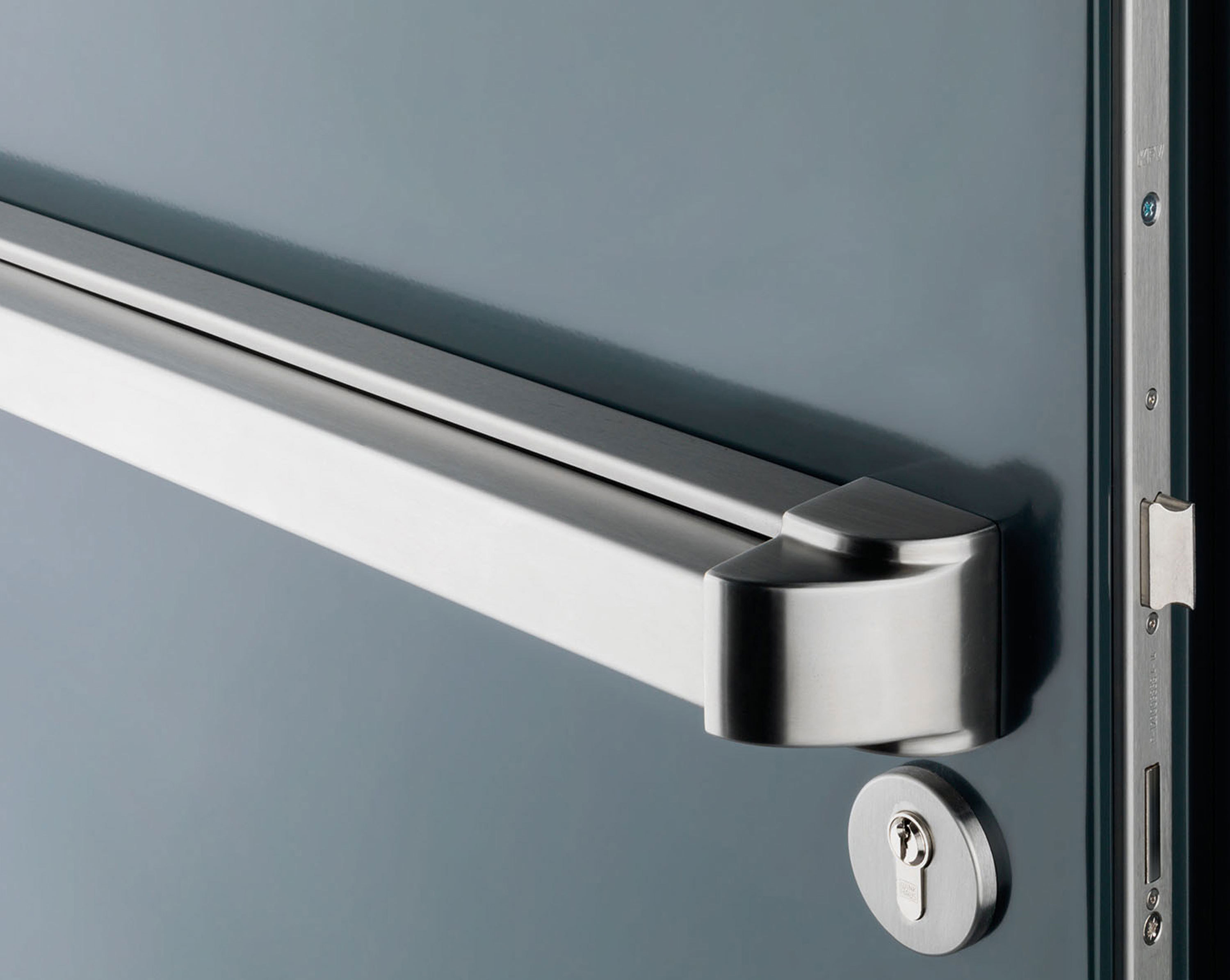
Teckentrup locks provide security and reliability in all areas and operate precisely. Long service life is guaranteed by state-of-the-art manufacture using high-quality materials and construction methods. As panic locks, Teckentrup locks work with horizontal panic triggering elements and conventional Teckentrup hardware. A defined trigger impulse ensures that the door springs open abruptly.
Locks include: